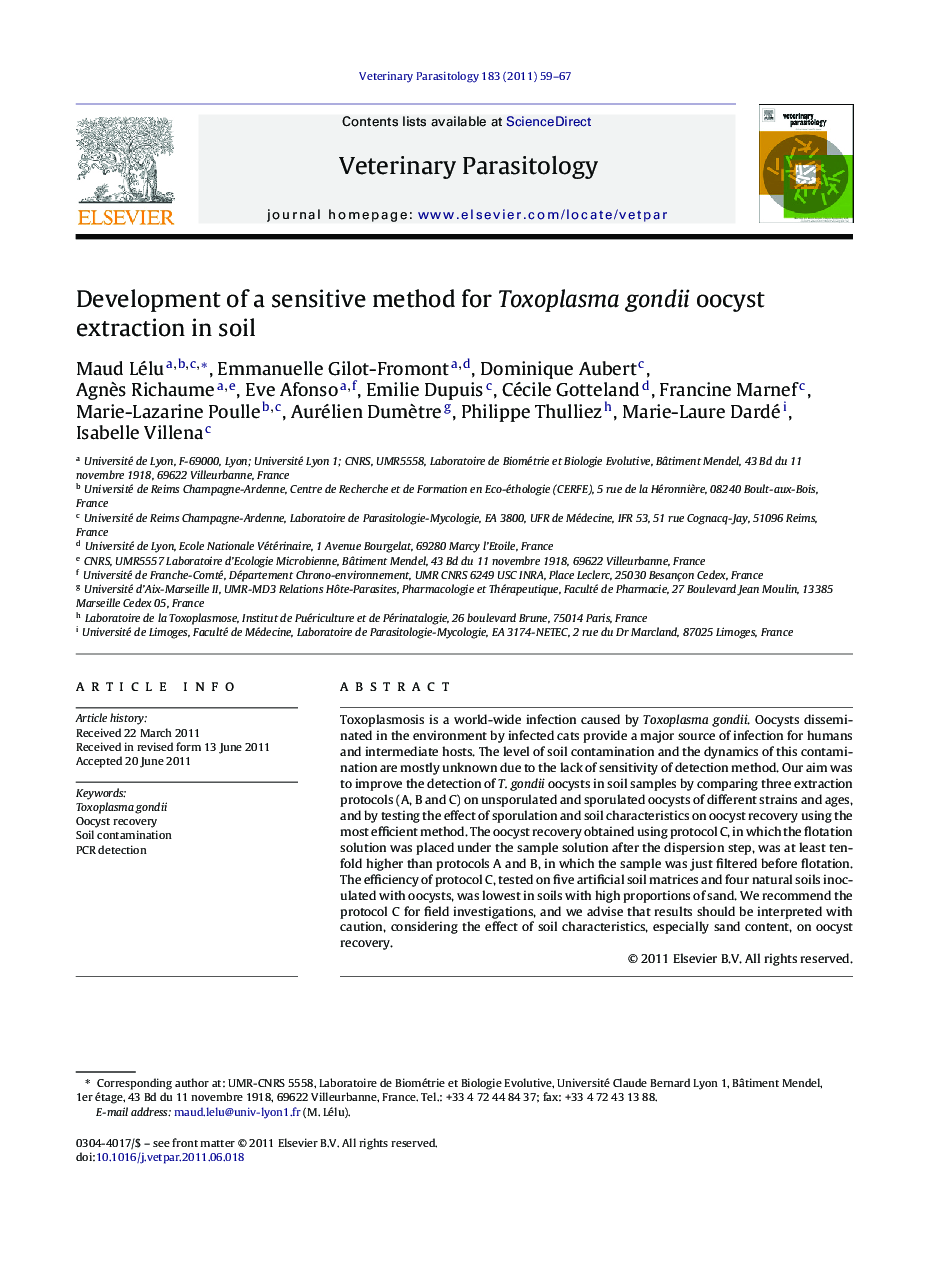| Article ID | Journal | Published Year | Pages | File Type |
|---|---|---|---|---|
| 5805268 | Veterinary Parasitology | 2011 | 9 Pages |
Toxoplasmosis is a world-wide infection caused by Toxoplasma gondii. Oocysts disseminated in the environment by infected cats provide a major source of infection for humans and intermediate hosts. The level of soil contamination and the dynamics of this contamination are mostly unknown due to the lack of sensitivity of detection method. Our aim was to improve the detection of T. gondii oocysts in soil samples by comparing three extraction protocols (A, B and C) on unsporulated and sporulated oocysts of different strains and ages, and by testing the effect of sporulation and soil characteristics on oocyst recovery using the most efficient method. The oocyst recovery obtained using protocol C, in which the flotation solution was placed under the sample solution after the dispersion step, was at least ten-fold higher than protocols A and B, in which the sample was just filtered before flotation. The efficiency of protocol C, tested on five artificial soil matrices and four natural soils inoculated with oocysts, was lowest in soils with high proportions of sand. We recommend the protocol C for field investigations, and we advise that results should be interpreted with caution, considering the effect of soil characteristics, especially sand content, on oocyst recovery.
